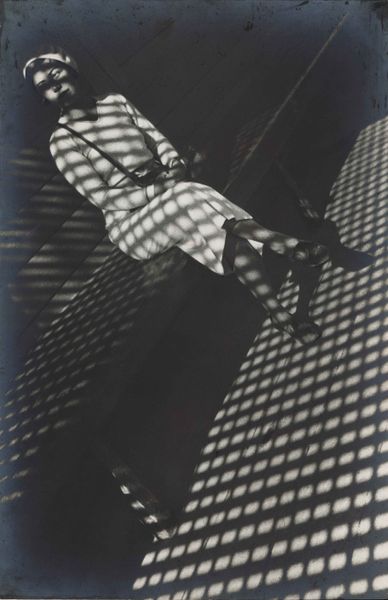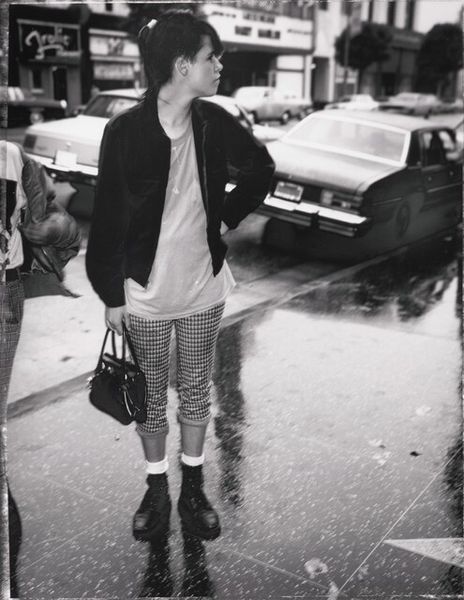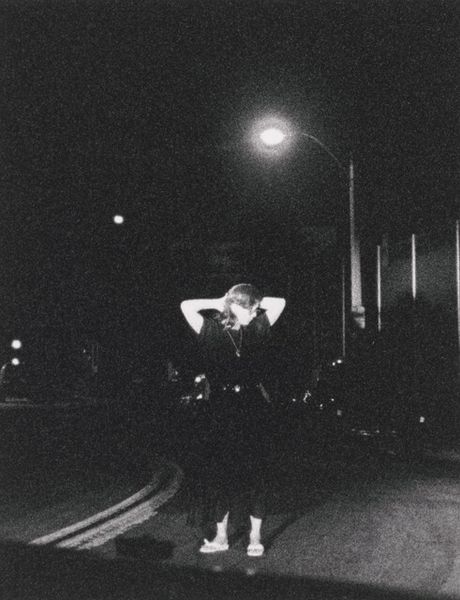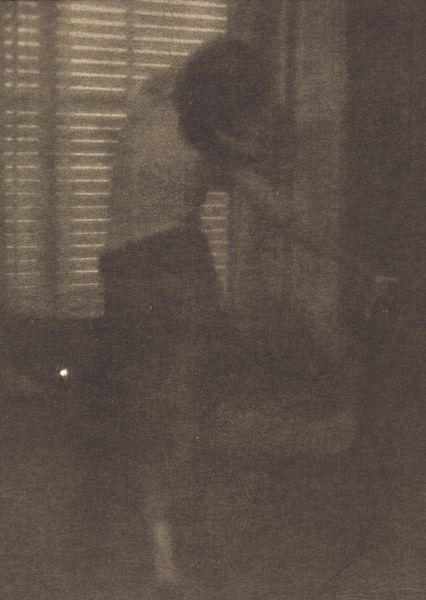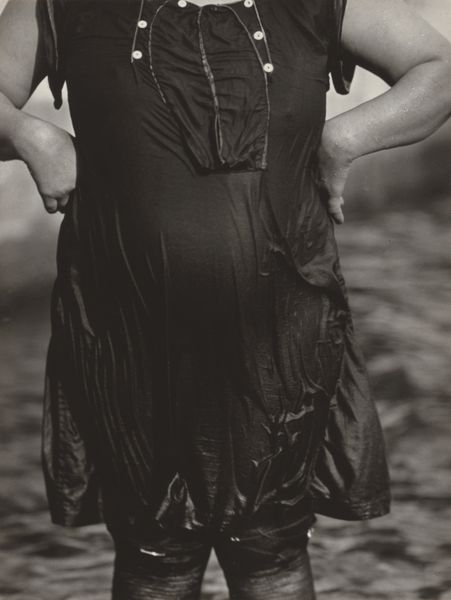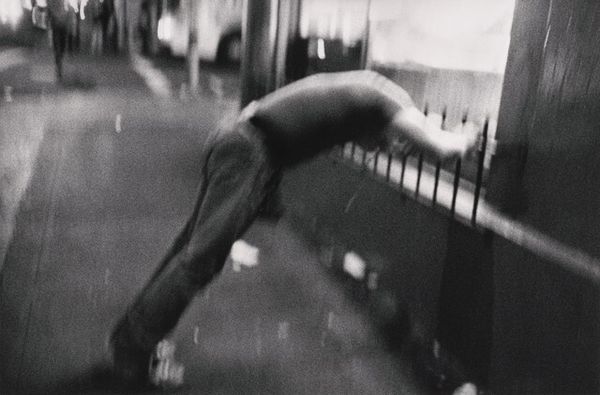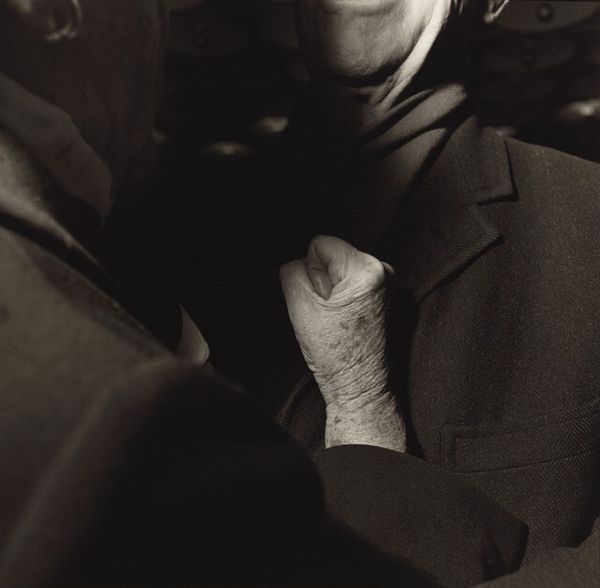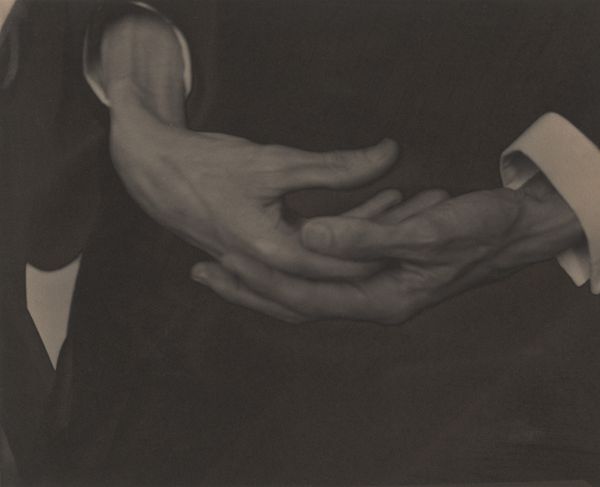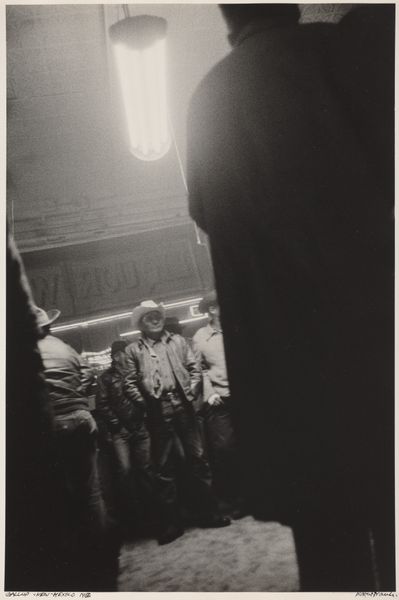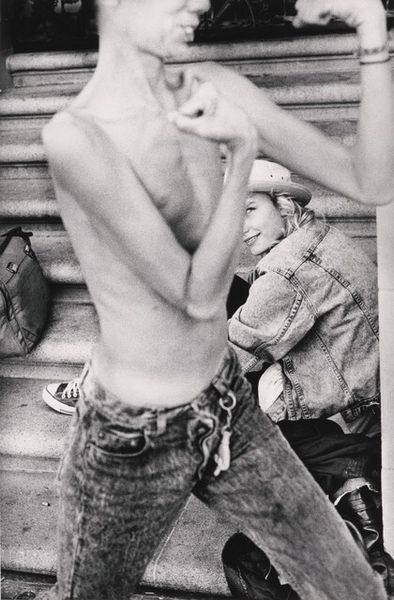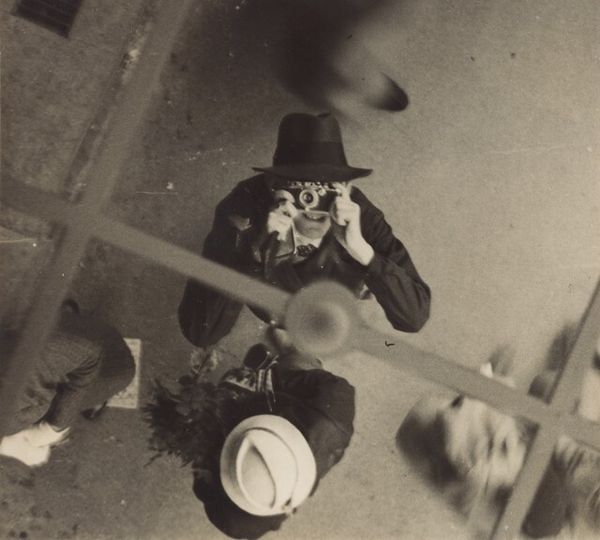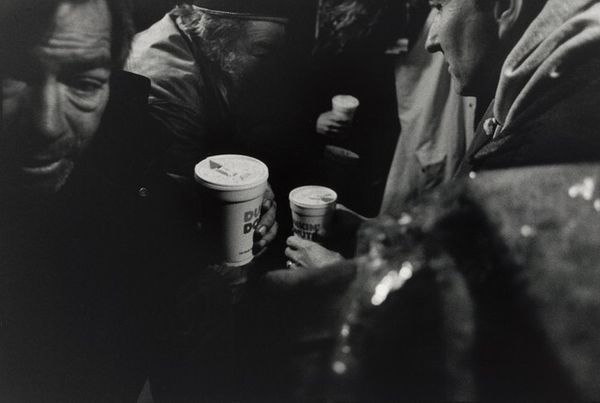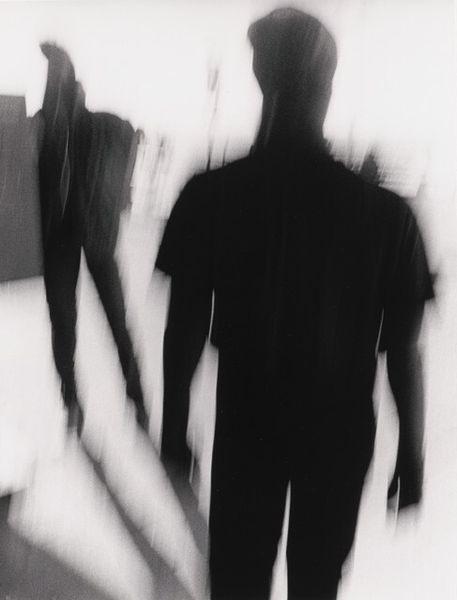
photography
#
portrait
#
black and white photography
#
cool tone monochrome
#
street shot
#
outdoor photo
#
black and white format
#
archive photography
#
street-photography
#
photography
#
black and white theme
#
black and white
#
monochrome photography
#
ashcan-school
#
monochrome
#
realism
#
monochrome
Dimensions: sheet (trimmed to image): 42.2 x 29.7 cm (16 5/8 x 11 11/16 in.)
Copyright: National Gallery of Art: CC0 1.0
Curator: Looking at this image, I am instantly swept up in a silent urban ballet. A black and white photograph that seems to whisper tales of the city. Editor: Well put! It’s Leon Levinstein’s "Times Square," circa 1965. It’s part of his amazing street photography series capturing everyday New Yorkers in unposed moments. Curator: It does have that feel. Candid, honest. It strikes me that the composition is less about framing iconic landmarks and more about focusing on individual lives unfolding against the backdrop of a relentless city. Editor: Precisely. And, of course, "Times Square" becomes a stage. It’s a compelling capture, almost anthropological. What social codes do we find at play here? Consider that New York was then at this very fulcrum point where economic inequality met artistic expression. How does this photographic slice challenge prevailing cultural narratives, or reinforce them? Curator: Yes, and perhaps unintentionally! The composition feels almost divided. The sharply dressed figure in the back walking left, and our subject…right here, right now. Their gazes are in different directions. One escapes. The other...endures? I can't look away from her stoicism! She anchors me here. What kind of impact did this art have when it was first unveiled to the world? How did New York see it, back in 1965? Editor: The artistic culture certainly evolved in response. New York saw the photo as either brave realism, or insensitive exposure, depending on your outlook and the politics of identity at the time. Today we continue to ask those important questions on voyeurism, and respect. These aren't simple images, and Levinstein courted controversy and conversation by pointing his lens this way. It helped break down many barriers that separated 'proper' art from every day living. Curator: Hmm, an everyday Venus. Or a modern-day Atlas perhaps. Carrying the weight of her world with such quiet determination. Food for thought! Editor: Indeed. Maybe it encourages us to become more conscious observers of each other, with empathy.
Comments
No comments
Be the first to comment and join the conversation on the ultimate creative platform.
